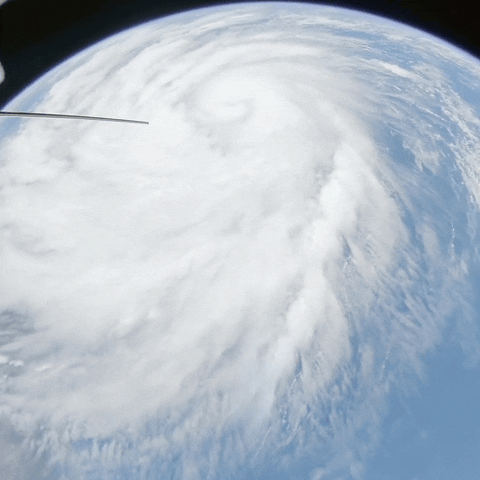Earlier this year, the company Insta360 sent two cameras to low-Earth orbit on a private space mission. Their camera is called Insta360 X2 and it can capture incredible 360-degree views; when applied to our planet and the rest of the galaxy, the videos and photos are truly something else. This is the first time that 360-degree cameras have been sent to space and the results speak for themselves.
The company is no stranger to extreme feats for their camera – this year, they also sent one of their new models on a weather balloon 26 kilometers (16 miles) into the stratosphere. But space is a completely different type of environment. The extreme temperatures that the camera experiences 500 kilometers (310 miles) above the Earth’s surface are no joke, ranging from -70 to 50 degrees Celsius (-94 to 22 degrees Fahrenheit).

A hurricane seen from space by the Insta360 X2.
Image credit: Insta360
And that’s not all. The camera had to be able to withstand an increased dose of radiation, as cosmic rays are not stopped outside of the atmosphere; this can harm electronics. It also had to withstand shocks and vibrations – rocket launches, even in the best conditions, are not smooth rides. Plus, there’s no one up there to fix or reposition the camera if something goes wrong.
Insta360 worked with Media Storm and satellite company Spacety, which creates Synthetic Aperture Radar images of Earth. Engineers had to adapt the camera to the harsh conditions in space with modifications to the lens, motherboard, and casing. The glue in the seal and plastic in the camera had to be adjusted and tested extensively, and to protect it from radiation, gold foil was added as a shield.
It resulted in cameras that can withstand low-Earth environments and slowly rotate, adjusting angle and shooting position, for some fantastic shots. It also goes to show that stars and galaxies are very visible in space; the reason why you usually don’t see them in photos is that video photography in space tends to focus on a lot of bright close-up objects and the dimmer starlight is not snapped. Insta360 X2 shows that this is indeed the case.
The satellite to which the camera is attached was launched in January 2023 and it is expected to work until 2026, when it will be deorbited. It will burn in the atmosphere during reentry.
Source Link: First-Ever 360° Images Of Earth From Space Are Truly Out Of This World